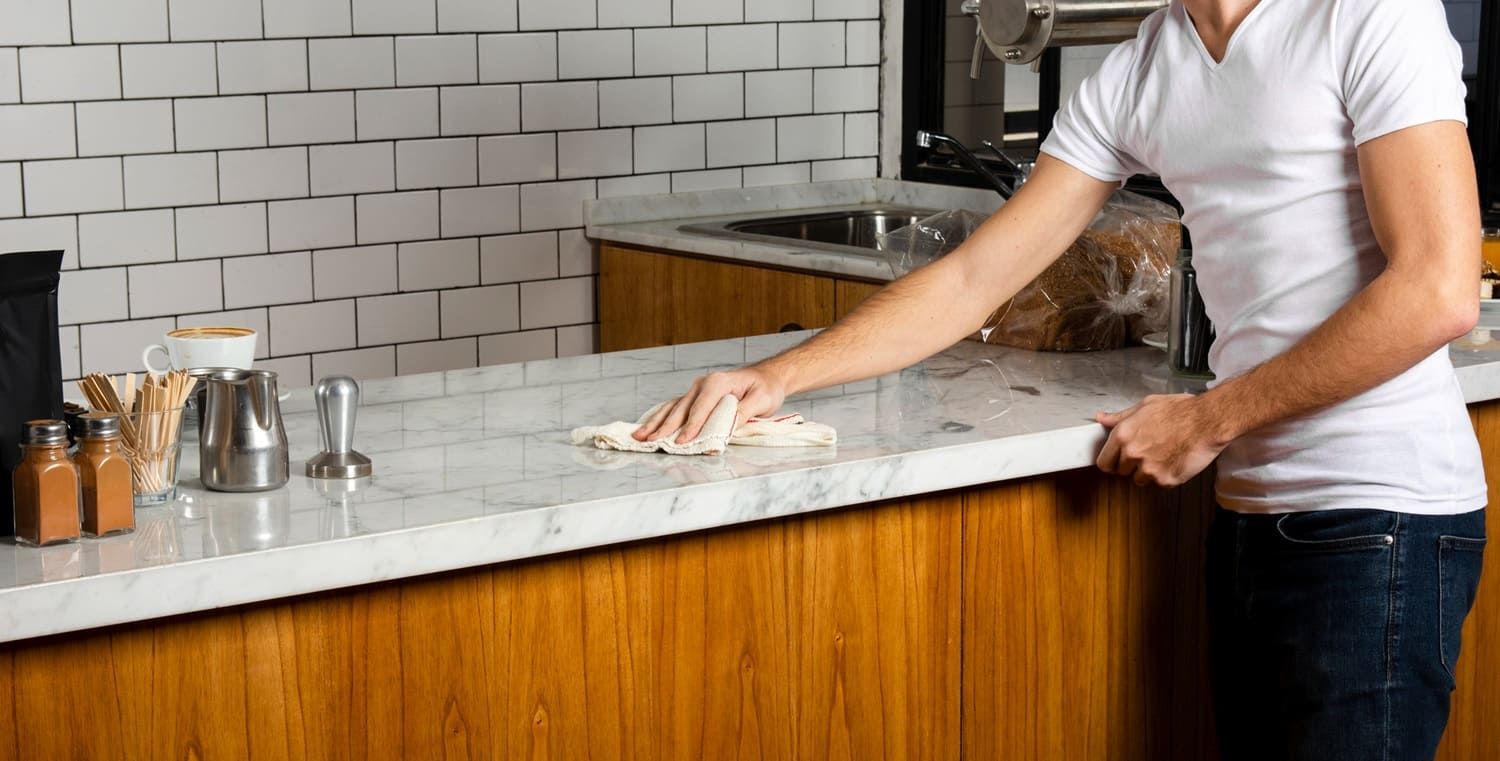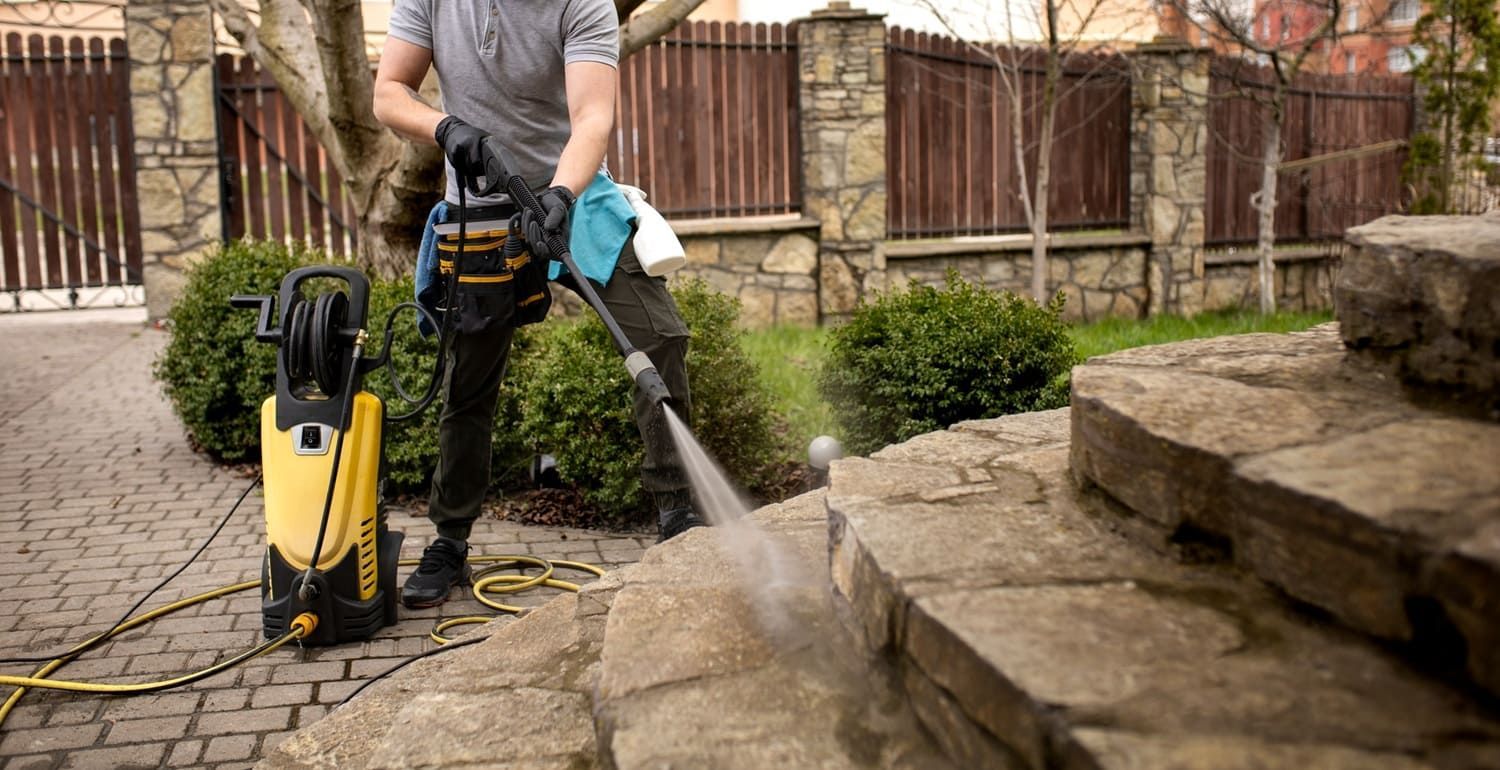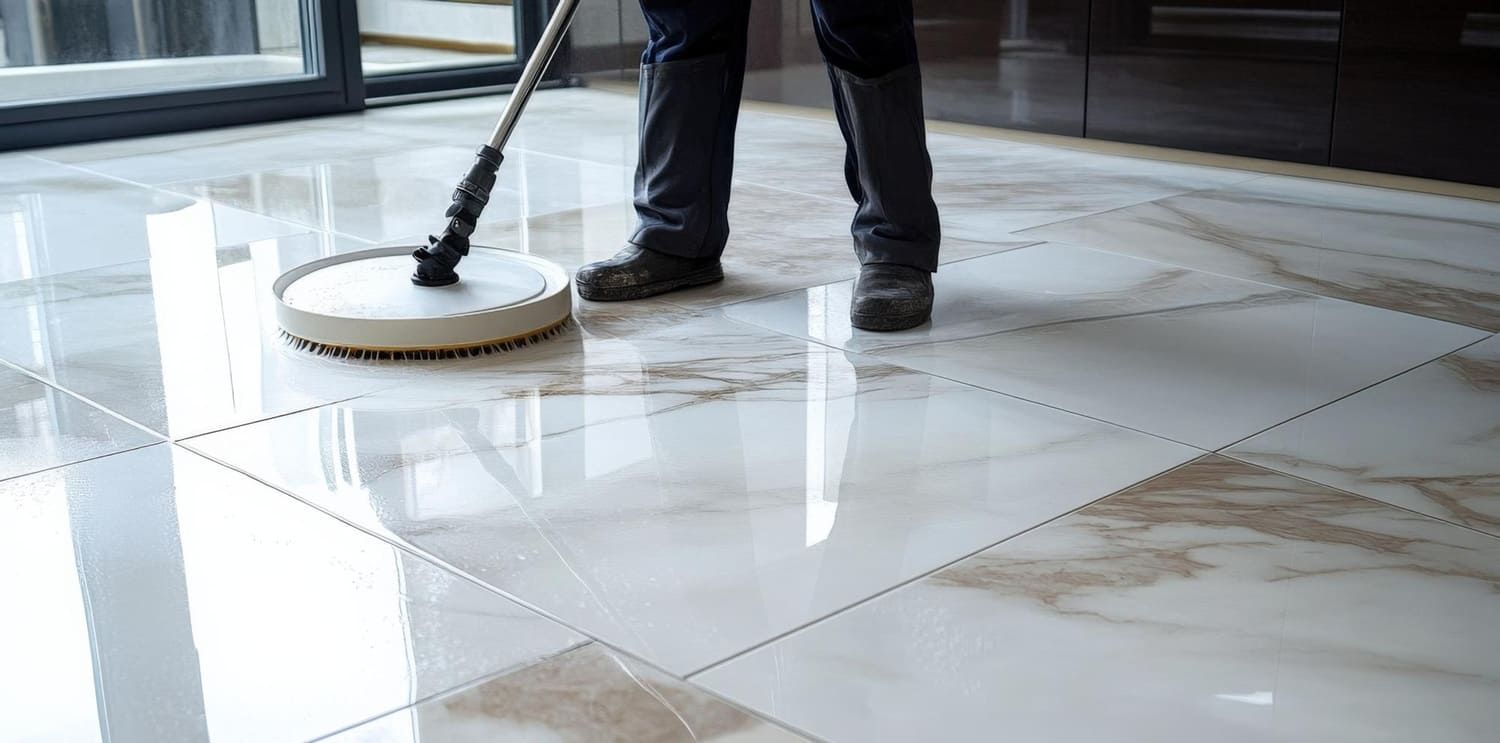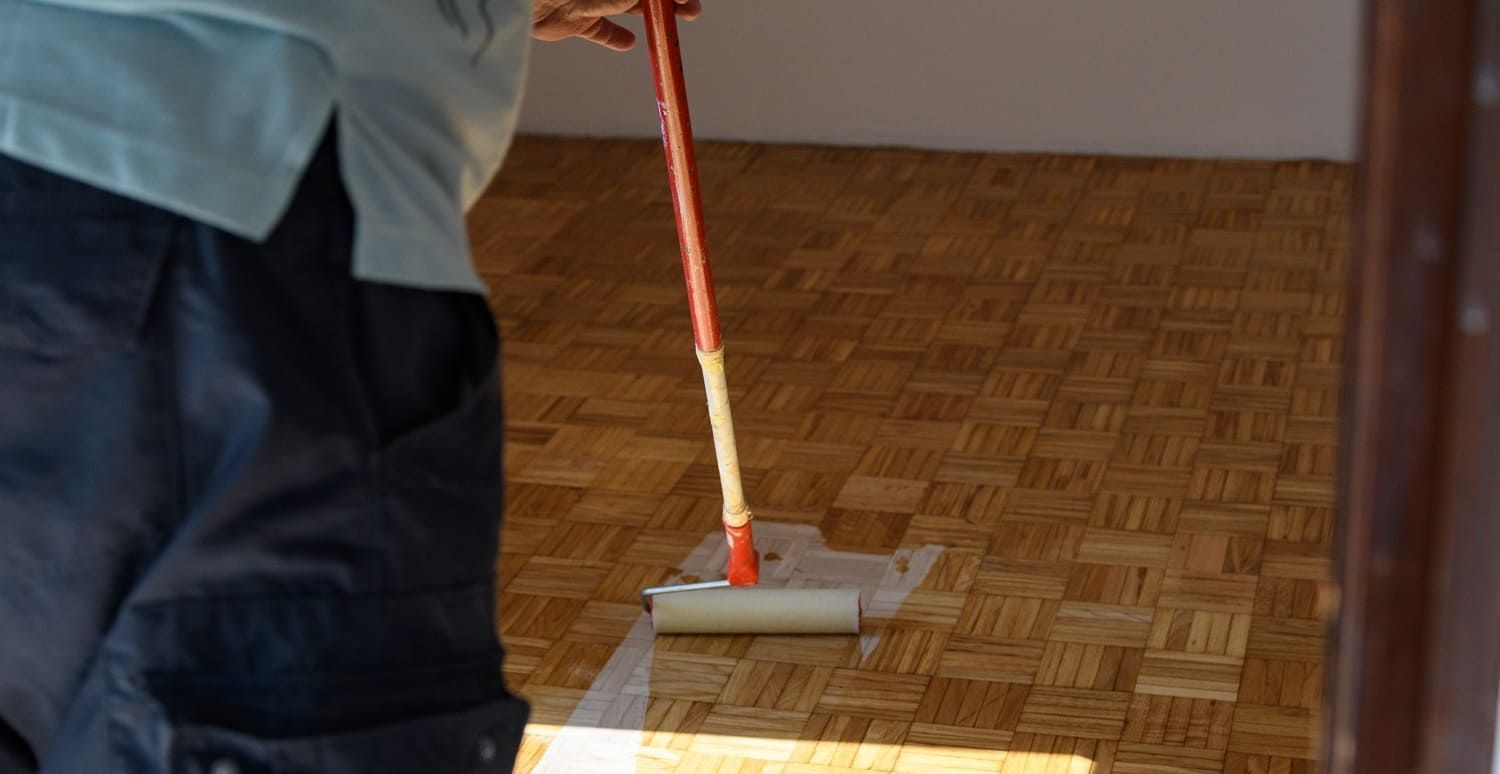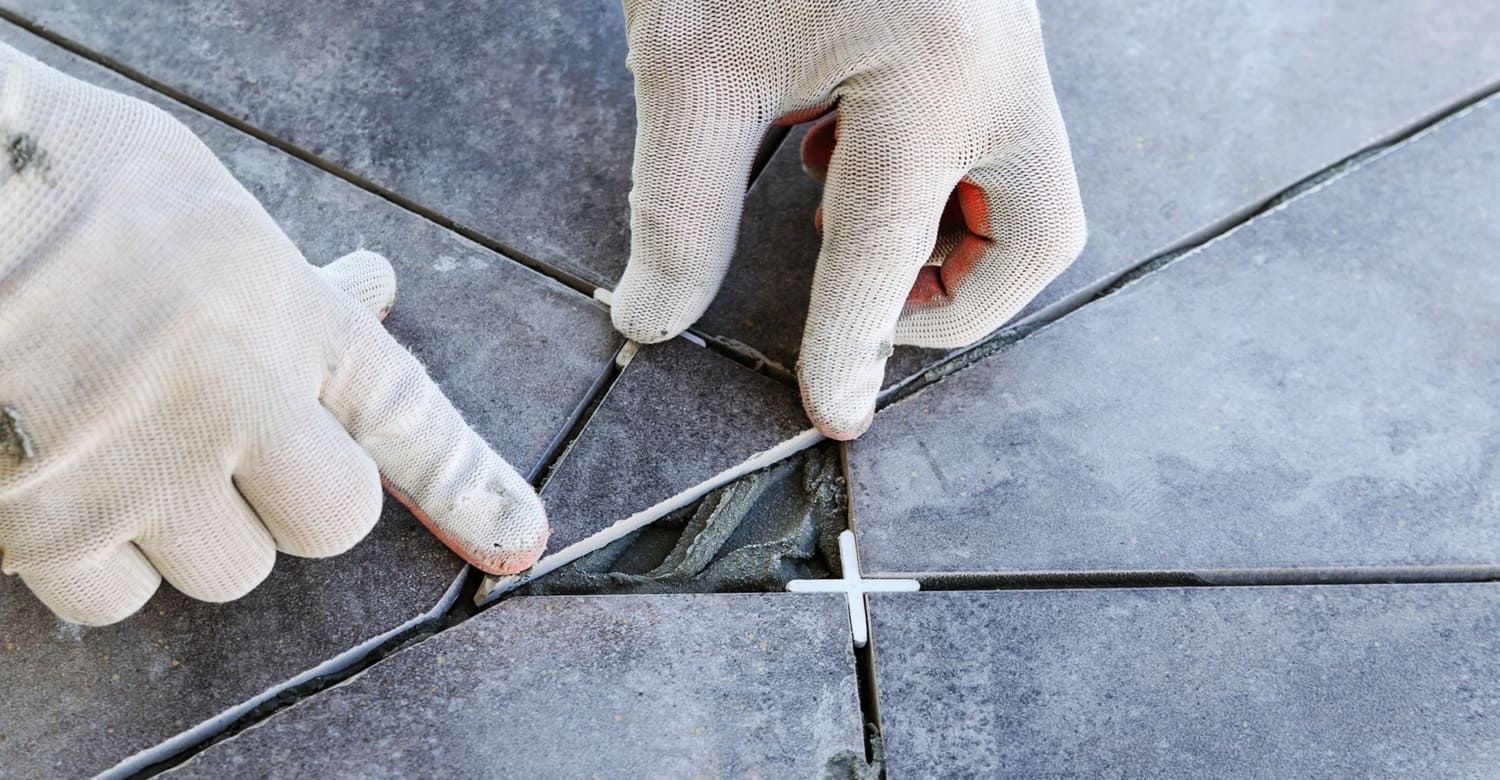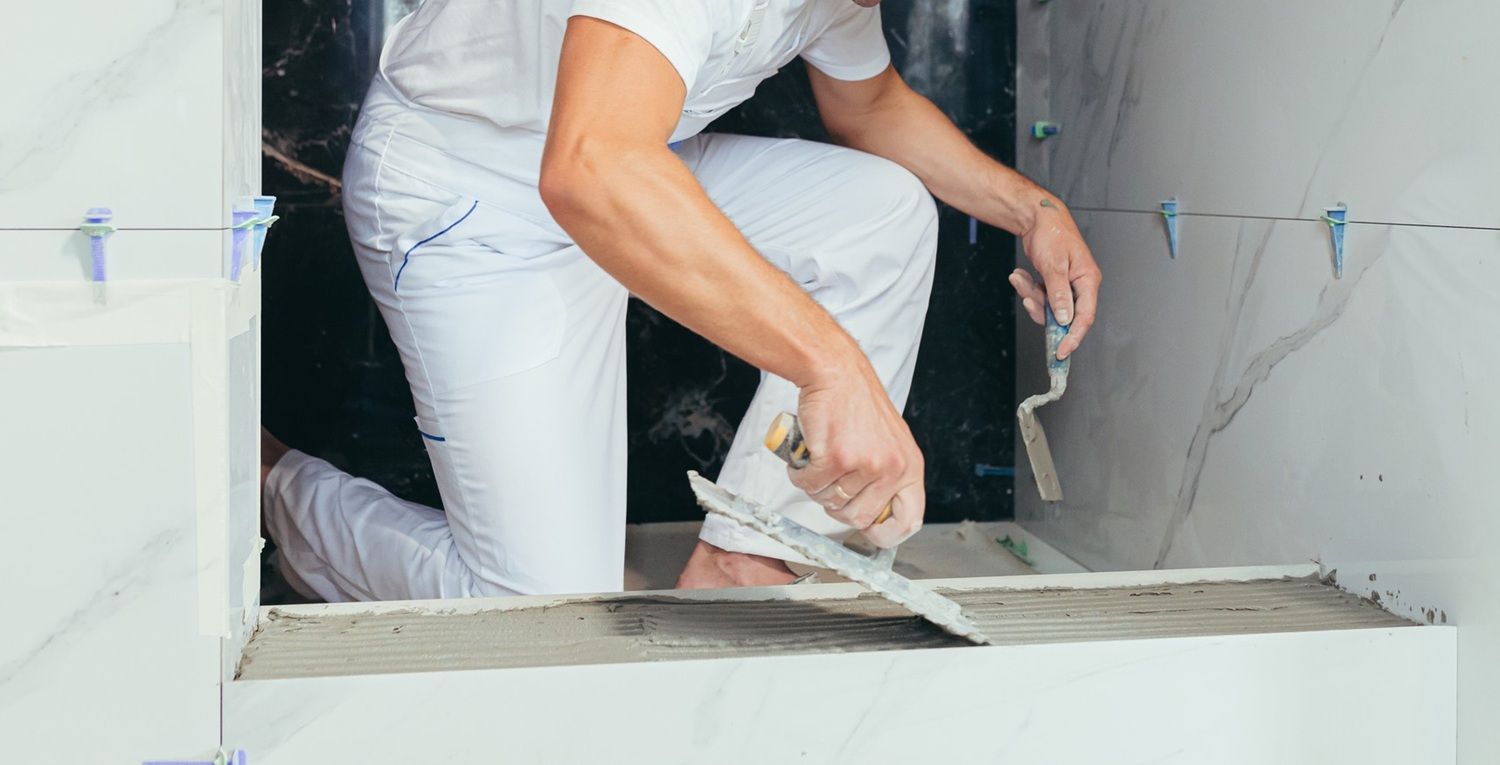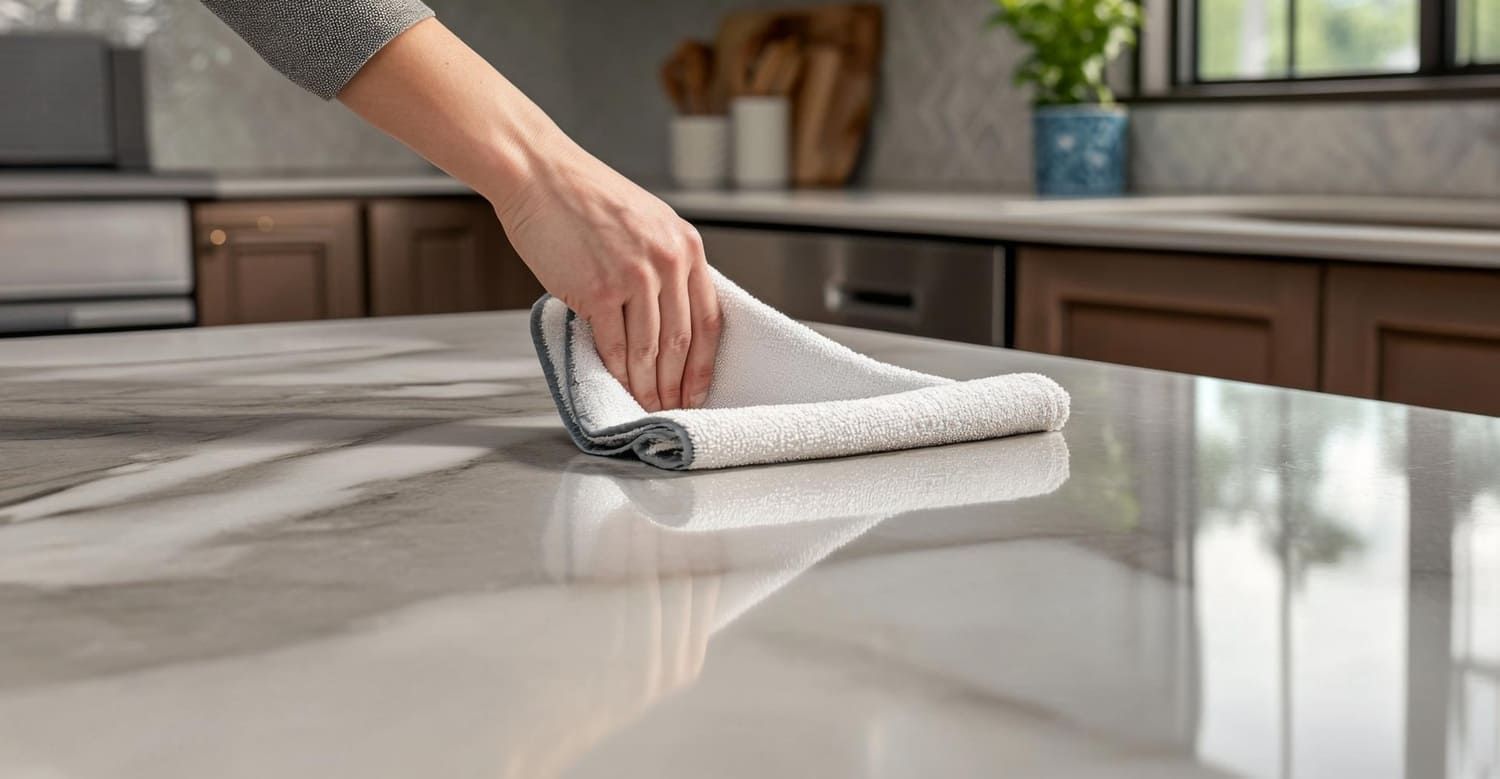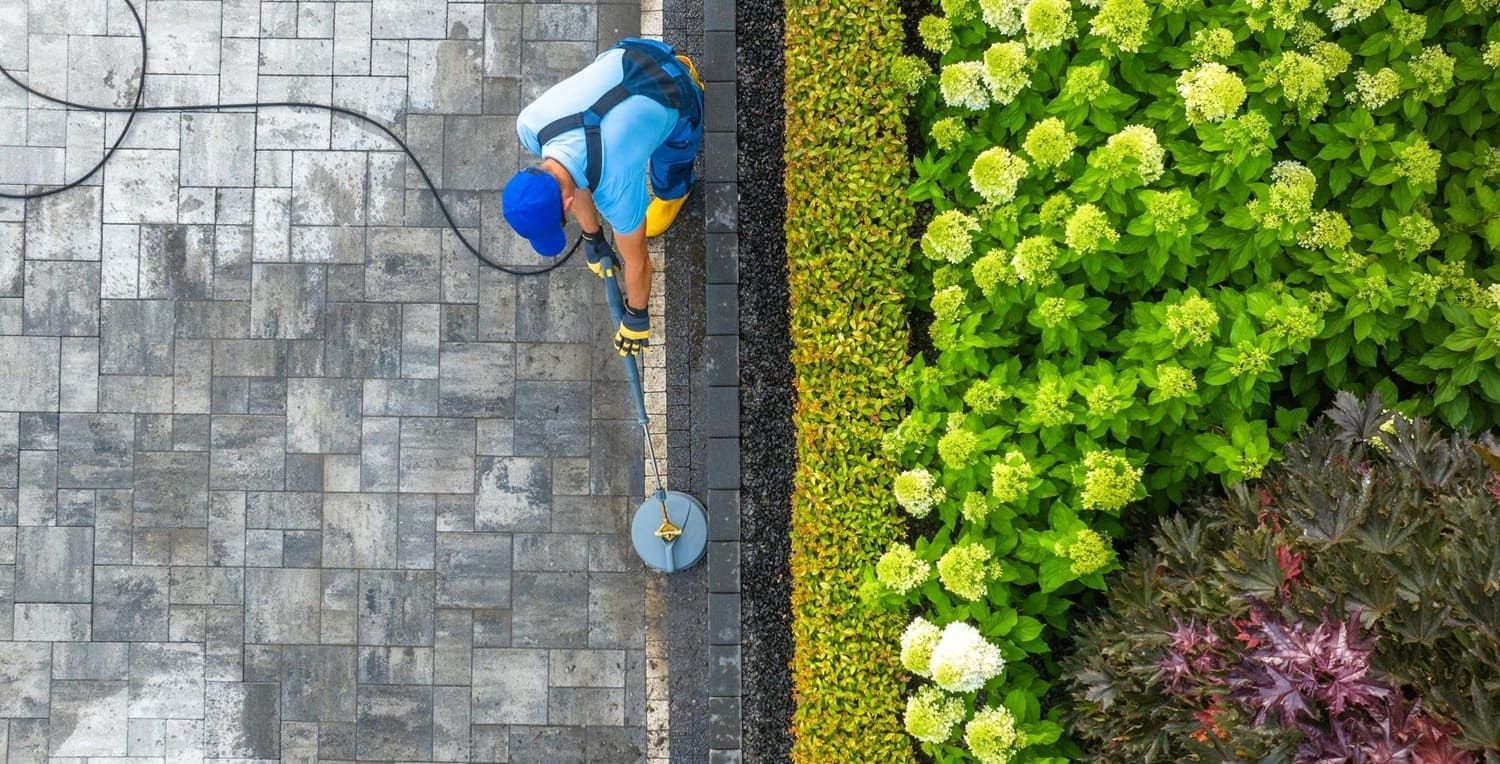ARIZONA'S BEST STONE, TILE, AND GROUT CLEANING SERVICES
What’s the Best Cleaning Method for Travertine Floors?
Travertine floors are a popular choice for homeowners due to their natural beauty and durability. These elegant stones can transform any space, adding a touch of luxury and sophistication. However, to keep your travertine tiles looking their best, it's essential to clean and maintain them properly. Without the right care, these beautiful floors can quickly lose their luster and become susceptible to damage. In this article, we'll explore the best cleaning methods for travertine floors, ensuring they remain stunning for years to come.
Travertine is a type of natural stone that's formed from mineral deposits, primarily composed of calcium carbonate. This stone is known for its unique appearance, with a variety of colors and patterns that can add elegance to any space. Each piece of travertine is distinct, featuring its own set of natural veins and textures that make it a one-of-a-kind addition to your home. However, because travertine is a porous stone, it requires special care to prevent damage. Its porous nature means it can easily absorb liquids and stains if not properly sealed and maintained.
Travertine has been used in construction for thousands of years, dating back to ancient Roman architecture. Its timeless appeal and robust nature make it a preferred choice for both modern and traditional homes. Despite its durability, travertine's porous surface makes it vulnerable to etching and staining if not cared for correctly. Understanding the characteristics of travertine is the first step towards maintaining its beauty and integrity. By knowing how to properly treat and clean this natural stone, you can ensure it retains its charm and value over time.

Basic Cleaning Tips for Travertine Floors
Cleaning travertine floors doesn't have to be a daunting task. With the right approach, you can keep your floors looking like new, preserving their elegance and charm. Here are some basic cleaning tips to help you maintain your travertine floors:
Daily Maintenance
To maintain your travertine floors, it's important to keep them free of dirt and debris. Sweeping or vacuuming daily can help prevent scratches and keep your floors looking clean. When vacuuming, use a soft brush attachment to avoid damaging the surface. Dust and small particles can act like sandpaper, scratching the surface of your travertine over time, so regular cleaning is crucial.
Moreover, placing doormats at entryways can significantly reduce the amount of dirt and grit that enters your home. Encourage family members and guests to wipe their feet before stepping onto your travertine floors. A simple routine of daily maintenance not only keeps your floors clean but also extends their lifespan, ensuring they remain a stunning focal point in your home for years to come.
Weekly Cleaning
Once a week, it's a good idea to mop your travertine floors with a damp mop. Use warm water and a pH-neutral cleaner specifically designed for natural stone. These cleaners are formulated to clean effectively without harming the stone's surface. Avoid using acidic or alkaline cleaners, as they can damage the stone's surface, leading to dullness and potential etching.
When mopping, ensure that the mop is only damp, not soaked, as excessive water can penetrate the stone and cause damage. After mopping, dry the floor with a clean towel or dry mop to prevent water spots and streaks. By incorporating a weekly cleaning routine, you can tackle the buildup of dirt and grime, ensuring your travertine floors maintain their pristine appearance.
Deep Cleaning Travertine Floors
Despite regular maintenance, your travertine floors may occasionally require a deep cleaning to remove stubborn stains or buildup. These deeper cleans help to rejuvenate the stone, restoring its natural beauty and shine. Here's how to do it safely:
Preparing the Floor
Before deep cleaning, remove any loose dirt or debris by sweeping or vacuuming. This will help prevent scratches during the cleaning process. Ensuring the floor is free from particles allows the cleaning solution to penetrate effectively, tackling the ingrained dirt without causing additional damage.
Additionally, inspect the floor for any noticeable stains or problem areas. Identifying these spots ahead of time allows you to focus your cleaning efforts where they are most needed. A careful preparation step sets the stage for a successful deep clean, ensuring your travertine floors are ready for the next step.
Choosing the Right Cleaner
For deep cleaning, select a cleaner specifically formulated for travertine or natural stone. These products are designed to clean without compromising the integrity of the stone. Avoid using vinegar, bleach, or ammonia, as these can etch the stone's surface. Such harsh chemicals can cause irreversible damage, dulling the stone’s natural shine and potentially causing etching.
When selecting a cleaner, look for those that are pH-neutral and free from harmful additives. Reading the labels and understanding the ingredients can save you from unintended damage. Investing in the right products ensures that your deep cleaning efforts enhance the beauty of your travertine floors rather than detracting from it.
Cleaning Process
- Dilute the Cleaner: Follow the manufacturer's instructions to dilute the cleaner with water. Proper dilution ensures the cleaner is effective without being too harsh.
- Apply the Solution: Use a soft mop or cloth to apply the cleaning solution to the floor, working in small sections. This ensures even coverage and prevents the cleaner from drying on the surface.
- Scrub Gently: Use a soft-bristle brush to gently scrub the floor, focusing on any stained or dirty areas. Gentle scrubbing protects the stone's surface while effectively removing dirt.
- Rinse Thoroughly: Rinse the floor with clean water to remove any residue from the cleaner. Residue can attract dirt and dull the stone if not removed.
- Dry the Floor: Use a clean, dry mop or towel to dry the floor, preventing water spots and streaks. Proper drying ensures no lingering moisture that could harm the stone.
Stain Removal for Travertine Floors
Travertine floors can occasionally become stained, especially in high-traffic areas or in rooms like kitchens and bathrooms. Stains can detract from the natural beauty of the stone, so prompt and proper treatment is essential. Here's how to tackle common stains:
Oil-Based Stains
For oil-based stains, such as grease or cooking oil, create a paste using baking soda and water. Apply the paste to the stain and let it sit for 24 hours. This method allows the baking soda to absorb the oil, lifting it from the stone. Then, remove the paste and rinse the area with water. This simple yet effective technique can restore the floor’s appearance without harsh chemicals.
In addition to using baking soda, keeping absorbent cloths or paper towels on hand can help immediately blot and absorb fresh oil spills. Quick action is key to preventing these stains from setting into the stone. A proactive approach to oil stains can save you time and effort while maintaining the appearance of your travertine floors.
Organic Stains
Organic stains, like coffee or wine, can be treated with a poultice made from hydrogen peroxide and a small amount of ammonia. Apply the poultice to the stain, cover it with plastic wrap, and let it sit for 24 hours before rinsing. This method draws the stain out of the stone, effectively removing it without damaging the surface.
It's crucial to test this solution on a small, inconspicuous area first, as hydrogen peroxide can have a bleaching effect on some stones. By carefully applying and monitoring the poultice, you can effectively treat organic stains while preserving the natural beauty of your travertine floors.
Rust Stains
Rust stains can be challenging to remove from travertine. It's best to use a commercial rust remover specifically designed for natural stone. These products are formulated to remove rust without harming the stone. Follow the product instructions carefully to avoid damaging the floor, as improper use can cause etching or discoloration.
In addition to using commercial products, regular inspection of areas prone to rust, such as near metal furniture or fixtures, can help prevent these stains from developing. By addressing potential rust issues early, you can maintain the pristine appearance of your travertine floors.
Sealing Travertine Floors
Sealing your travertine floors is an essential step in protecting them from stains and damage. A good sealant acts as a barrier, preserving the stone's natural beauty and extending its lifespan. Here's what you need to know about sealing:
Why Seal Travertine?
Sealing travertine helps to fill the stone's pores, creating a barrier that prevents stains and moisture from penetrating the surface. This is especially important in areas prone to spills, such as kitchens and bathrooms, where the risk of staining is higher. A properly sealed travertine floor is more resilient to everyday wear and tear, making maintenance easier.
Regular sealing not only protects the stone but also enhances its natural colors and patterns, keeping it vibrant and attractive. By investing in quality sealant and taking the time to seal your floors, you can significantly extend their beauty and functionality.
How to Seal Travertine
- Choose the Right Sealer: Select a penetrating sealer specifically designed for travertine or natural stone. These sealers penetrate deep into the stone, providing long-lasting protection.
- Clean the Floor: Ensure the floor is clean and dry before applying the sealer. Any dirt or moisture can affect the sealing process, leading to uneven protection.
- Apply the Sealer: Use a clean cloth or applicator pad to apply the sealer evenly across the floor. Even application ensures consistent protection and prevents patchiness.
- Allow to Dry: Let the sealer dry according to the manufacturer's instructions before walking on the floor. Proper drying time ensures the sealer sets correctly, maximizing its effectiveness.
Sealing is a crucial step in the care and maintenance of travertine floors, providing a protective shield that enhances their durability and appearance.

Preventing Damage to Travertine Floors
Preventing damage is easier than fixing it. By taking preventive measures, you can avoid costly repairs and ensure your travertine floors remain in excellent condition. Here are some tips to protect your travertine floors:
- Use Rugs and Mats: Place rugs or mats in high-traffic areas and entryways to catch dirt and debris before it reaches your floors. This simple step can significantly reduce the wear on your travertine, preserving its beauty.
- Avoid Dragging Furniture: Lift and carry furniture instead of dragging it to prevent scratches. Using furniture pads can also help protect the surface from accidental damage.
- Wipe Up Spills Immediately: Promptly clean spills to avoid staining the stone. Quick action is essential in preventing liquid from seeping into the stone's pores.
Regular inspection and maintenance can help identify potential issues before they become serious problems, ensuring your travertine floors remain a stunning feature in your home.
Conclusion
Travertine floors are a beautiful and durable choice for any home, but maintaining their elegance requires the right care and attention. At Desert Tile & Grout Restore, we provide the best stone, tile, and floor refinishing & restoration services for homeowners in Glendale, Scottsdale, Phoenix, and throughout Maricopa County. Our team specializes in restoring travertine surfaces to their original beauty through expert cleaning, sealing, and refinishing.
By following proper maintenance routines and using high-quality cleaning products, you can ensure your travertine tiles remain stunning for years. The right techniques help protect the stone’s natural finish and prevent damage, ensuring your floors retain their timeless appeal.
With regular care and professional restoration from Desert Tile & Grout Restore, your travertine floors will continue to elevate your home’s aesthetic and value. Our experts can guide you on the best products and maintenance schedule to keep your stone surfaces looking their best year-round.
Contact Desert Tile & Grout Restore today for your free estimate and discover why homeowners across Maricopa County trust us for expert stone, tile, and floor restoration that delivers lasting results.
FAQs About Cleaning Travertine Floors
What’s the best way to clean travertine floors?
Use a pH-neutral stone cleaner and a soft mop or microfiber cloth.
Can I use vinegar or bleach on travertine?
No. Acidic or harsh cleaners can etch and dull the surface.
How often should I clean travertine floors?
Sweep or vacuum daily and damp mop weekly to maintain shine.
Do travertine floors need to be sealed?
Yes. Sealing protects the stone from stains and moisture damage.
Can steam cleaners be used on travertine?
No. Excess heat and moisture can weaken or discolor the stone.
What’s the best way to remove stains from travertine?
Use a poultice or stone-safe stain remover for deep stains.
How do I keep travertine floors shiny?
Regular cleaning, sealing, and professional polishing help maintain gloss.
Can I clean travertine grout the same way?
Yes, but use a gentle grout cleaner that’s safe for natural stone.

